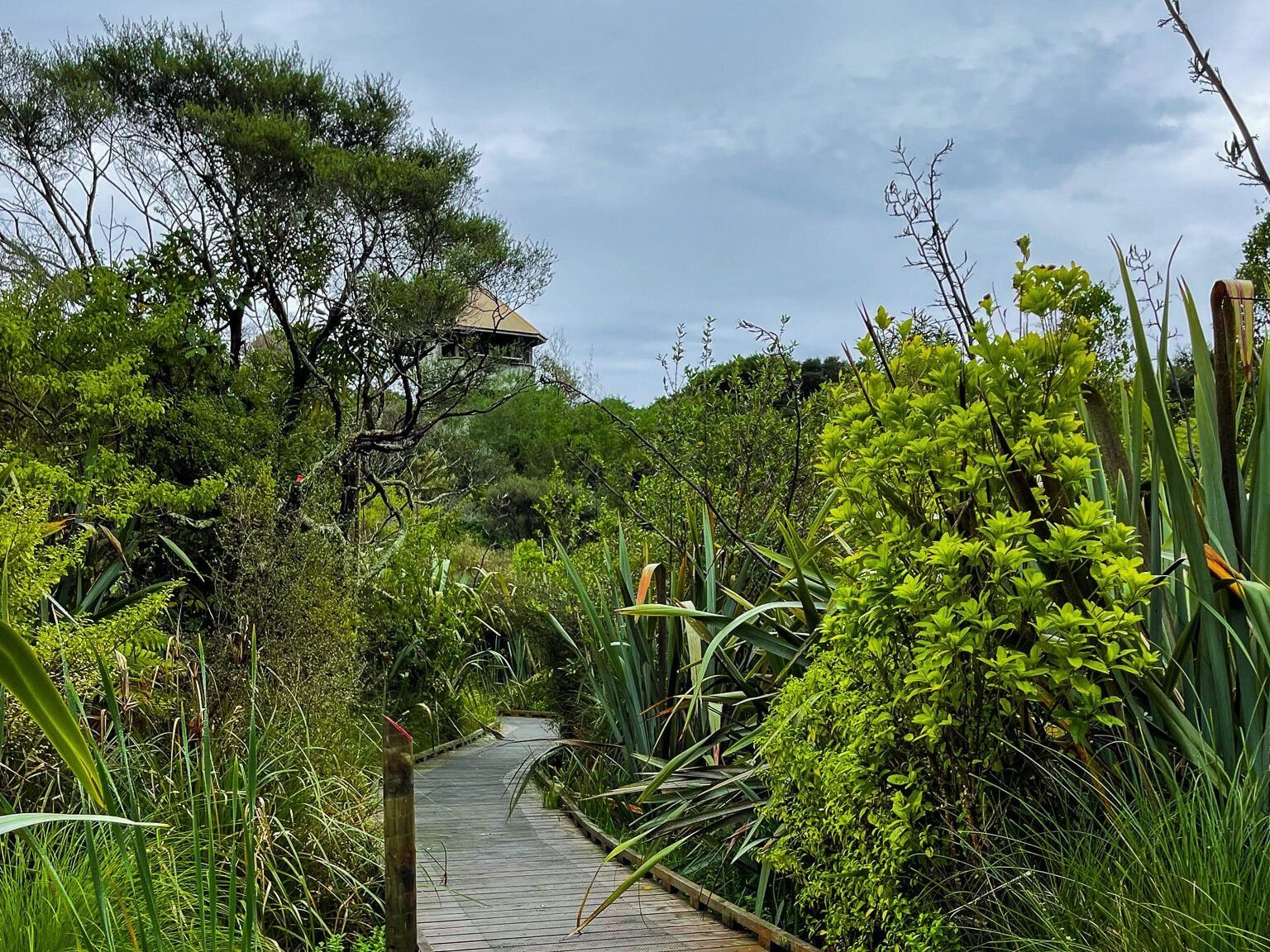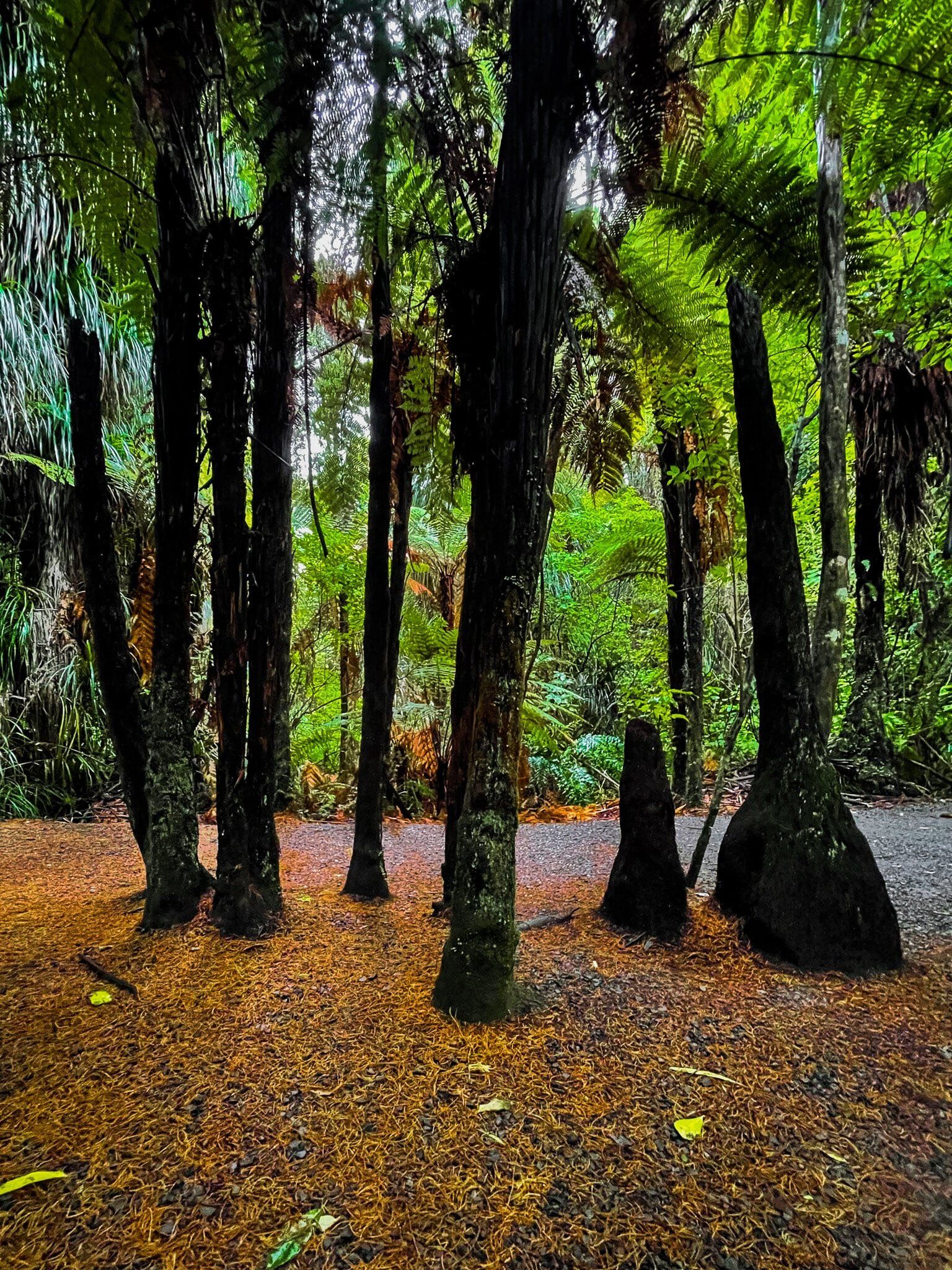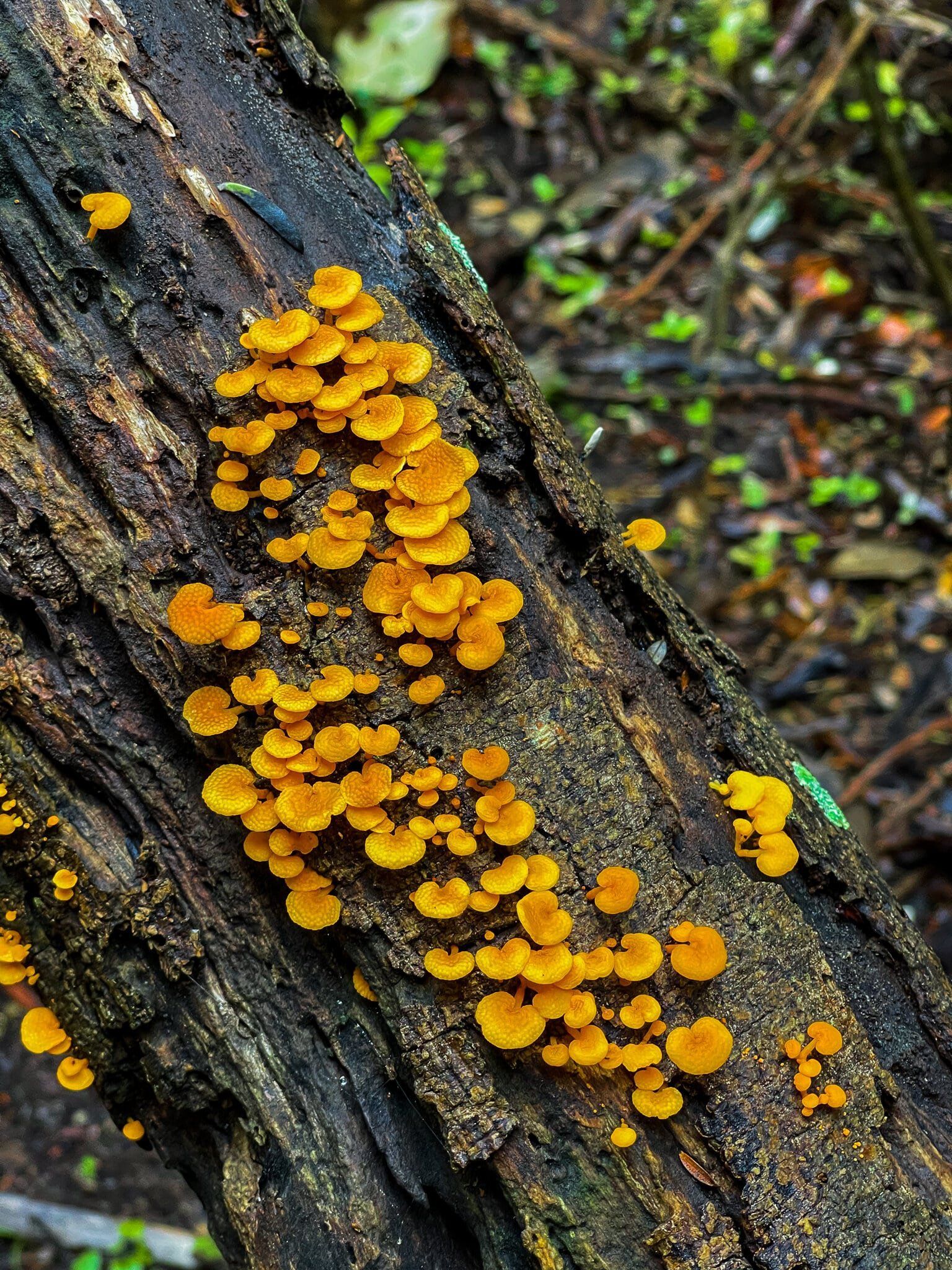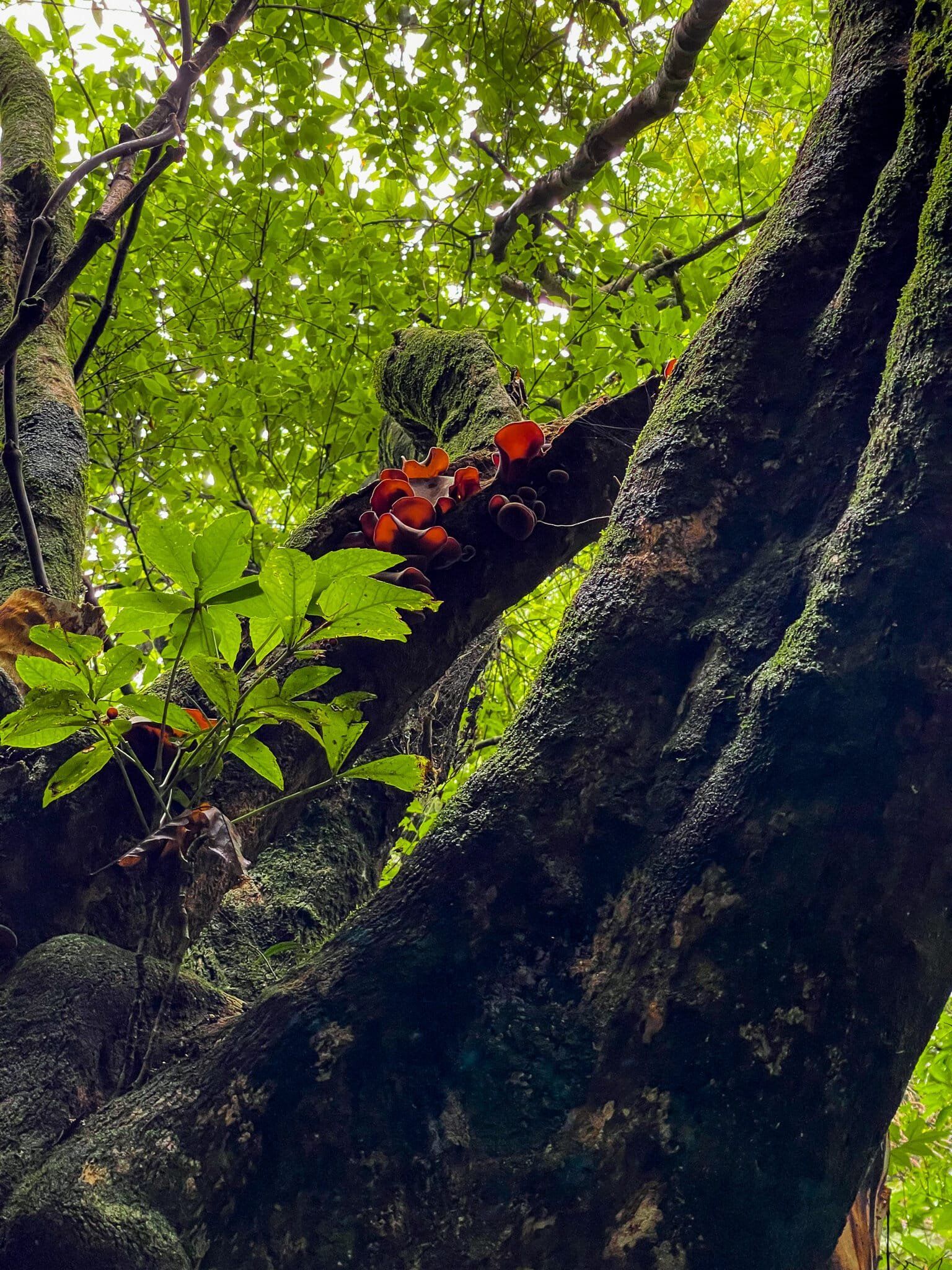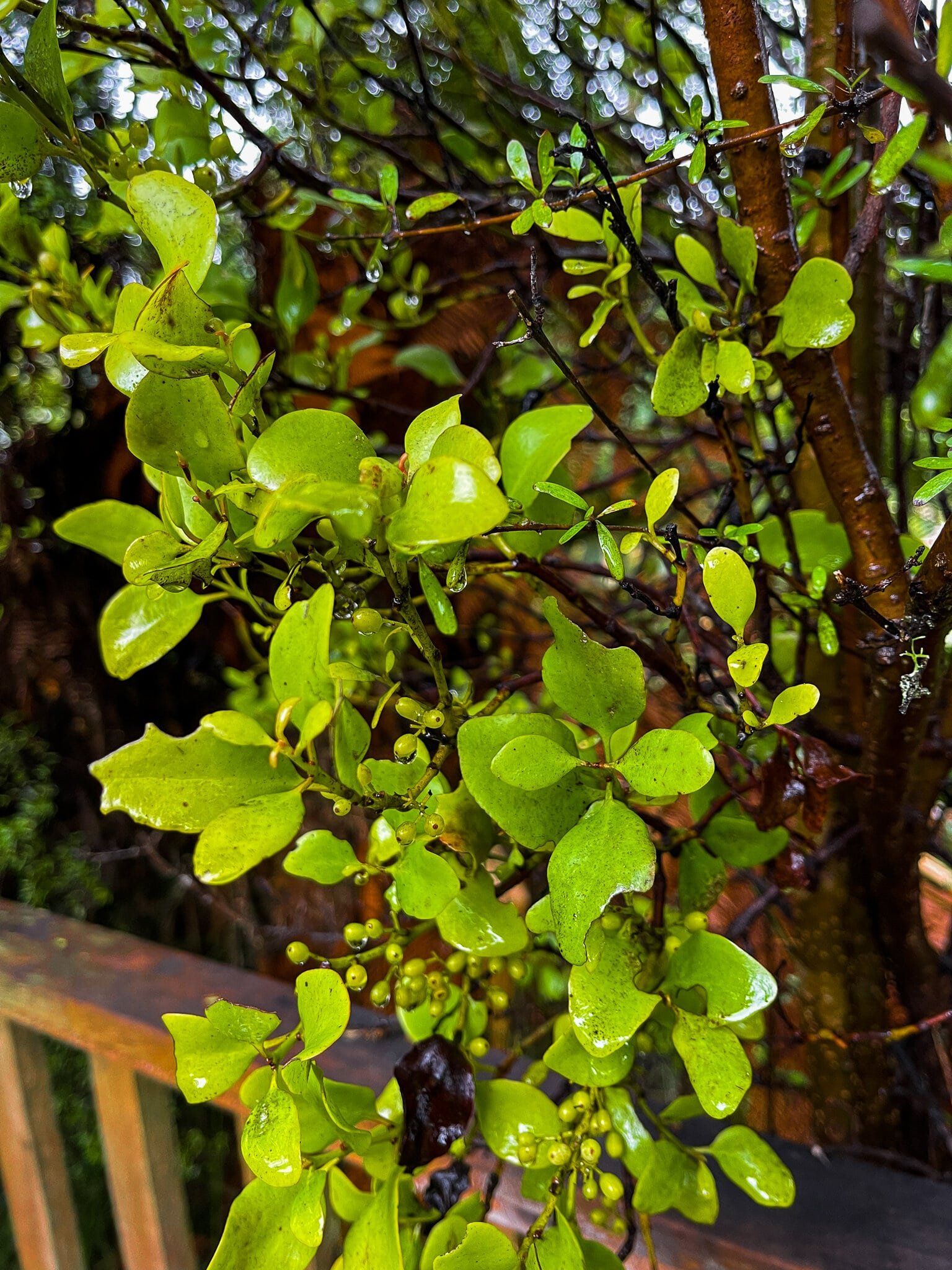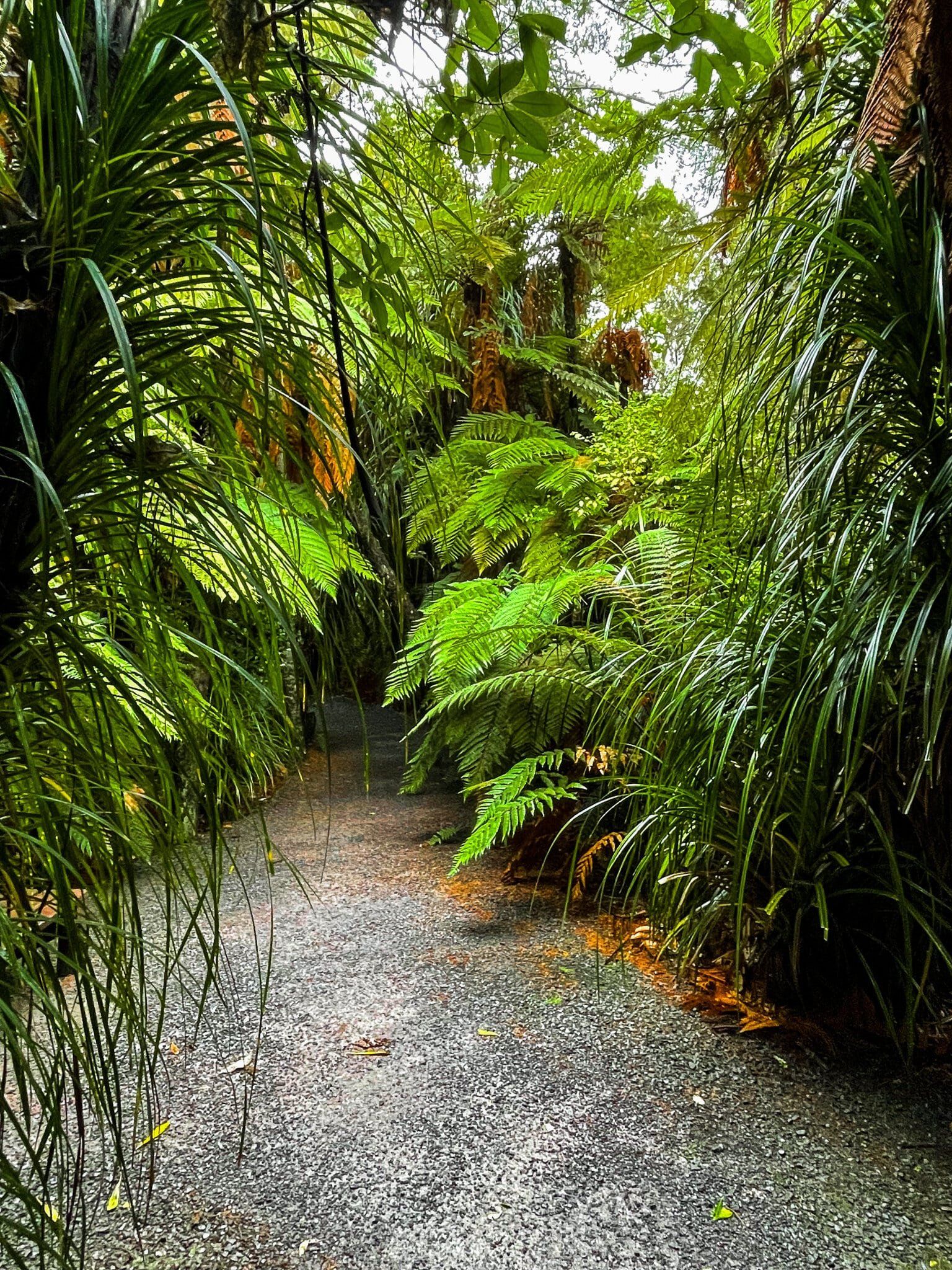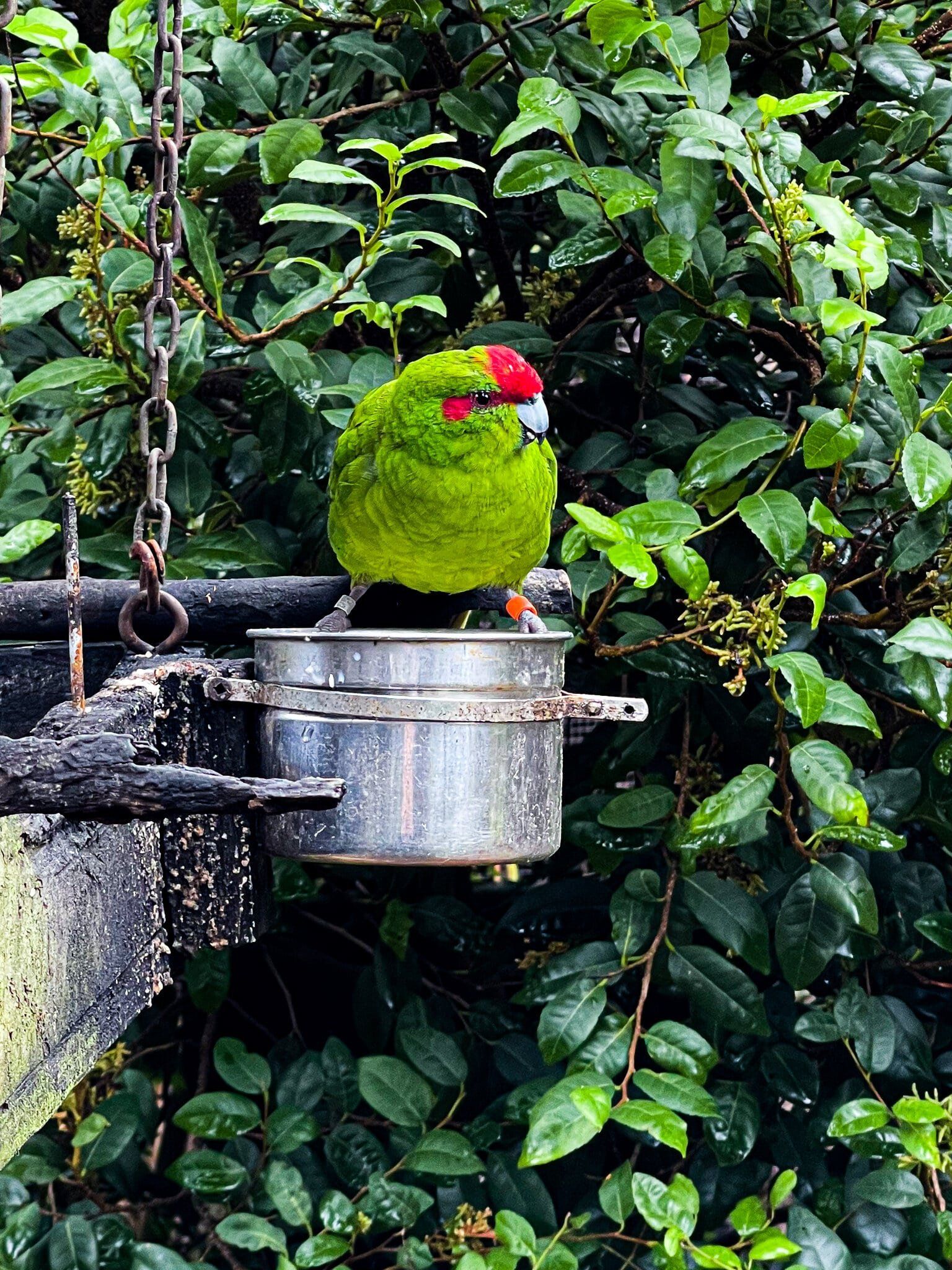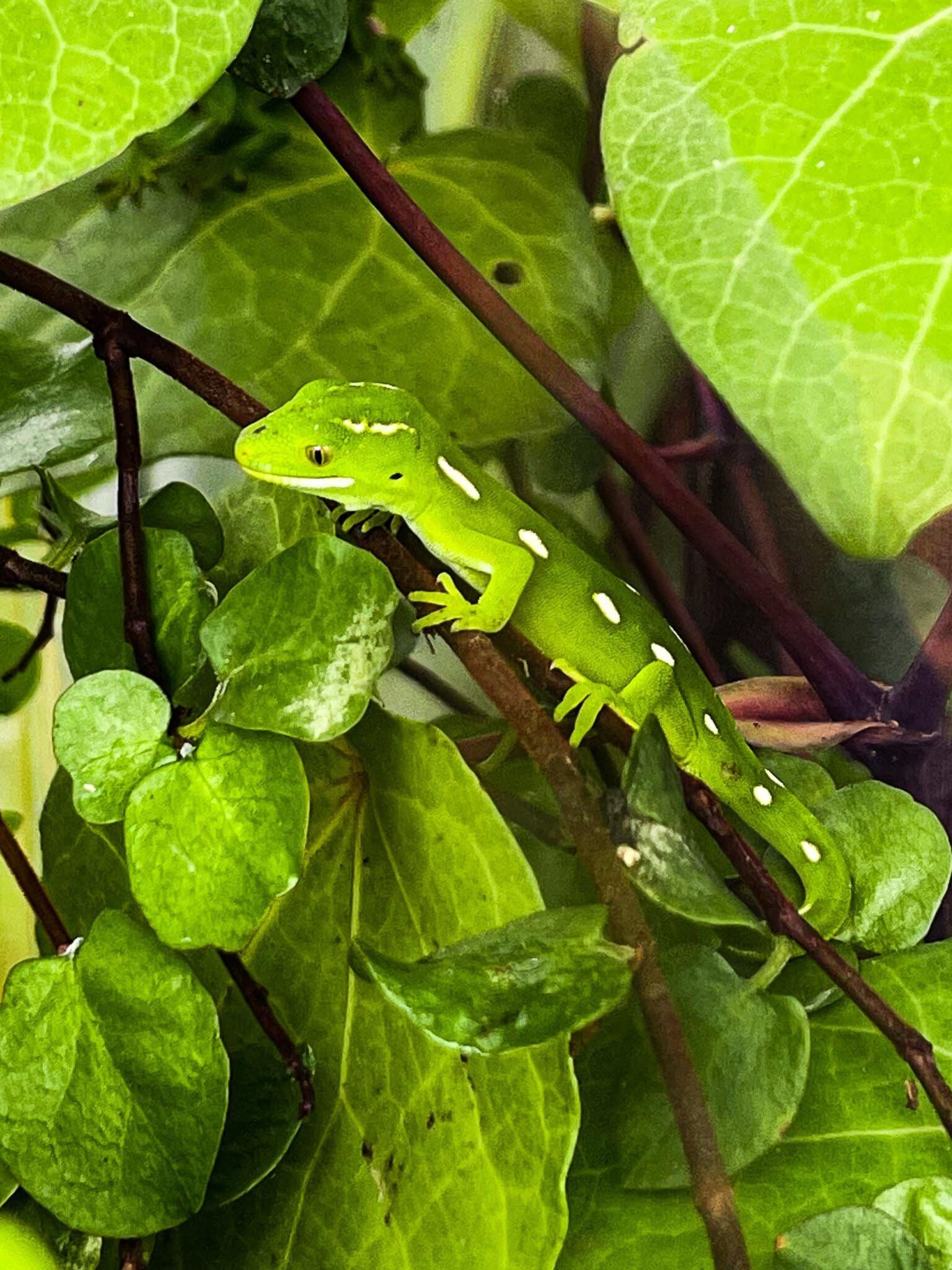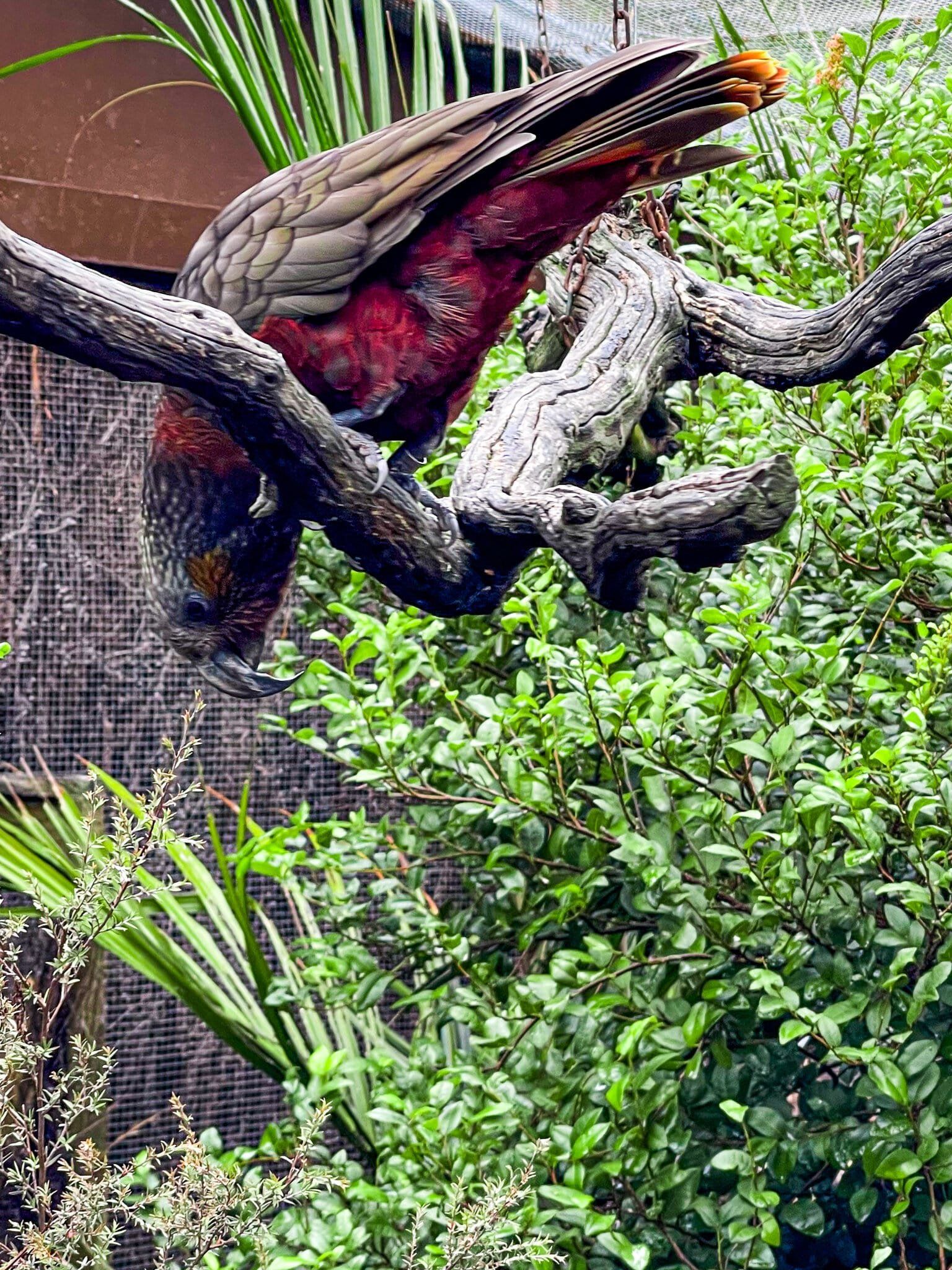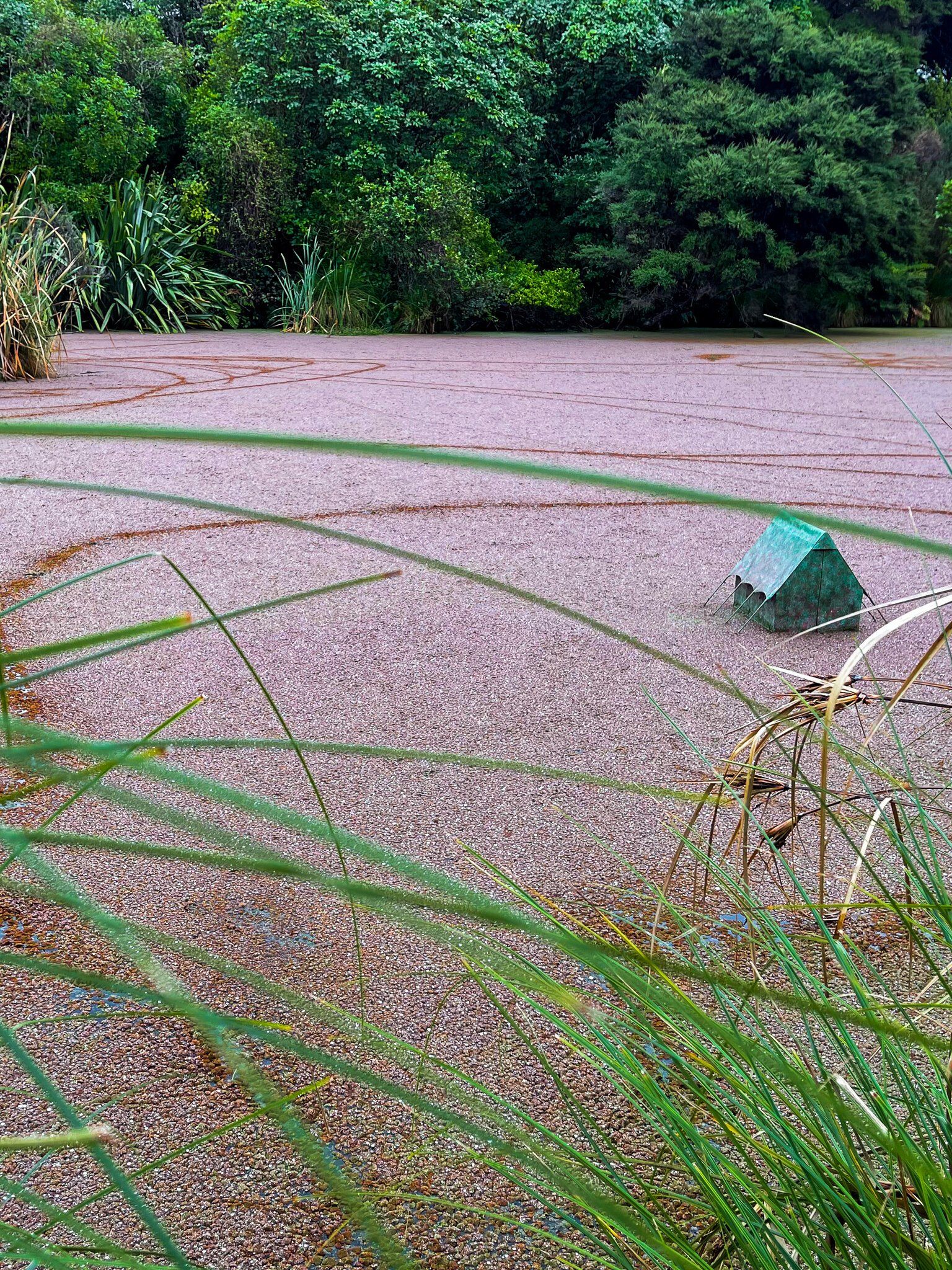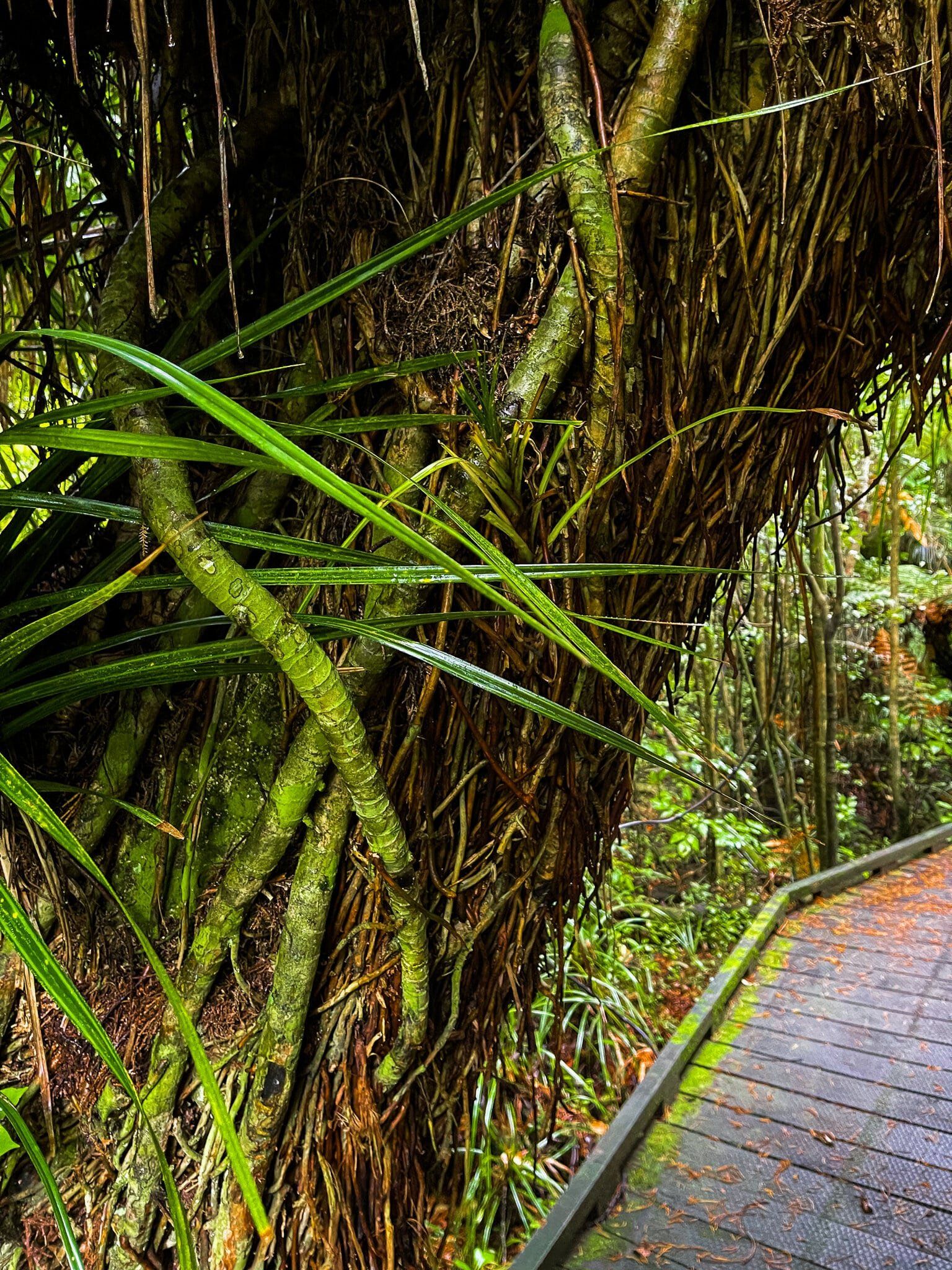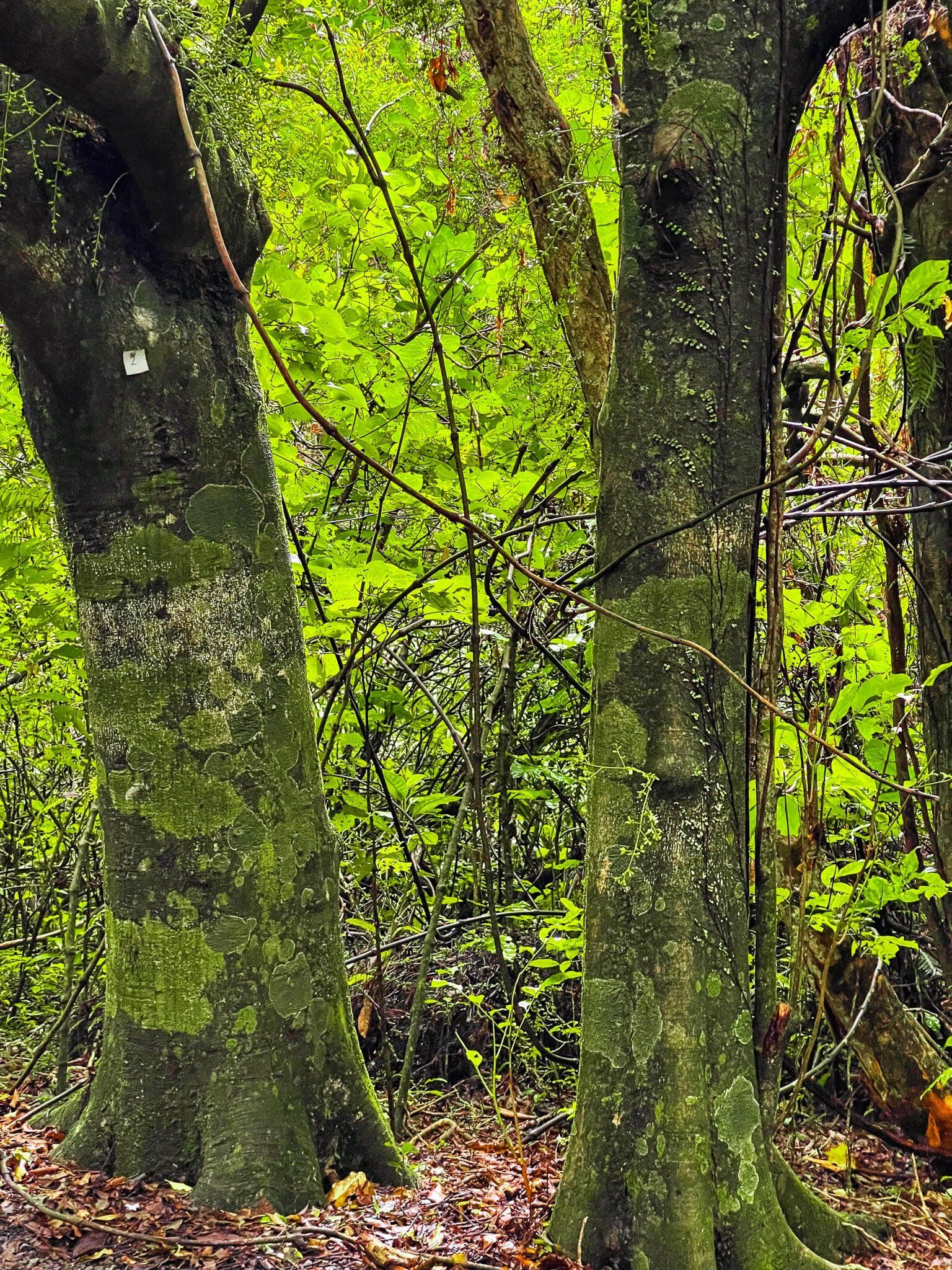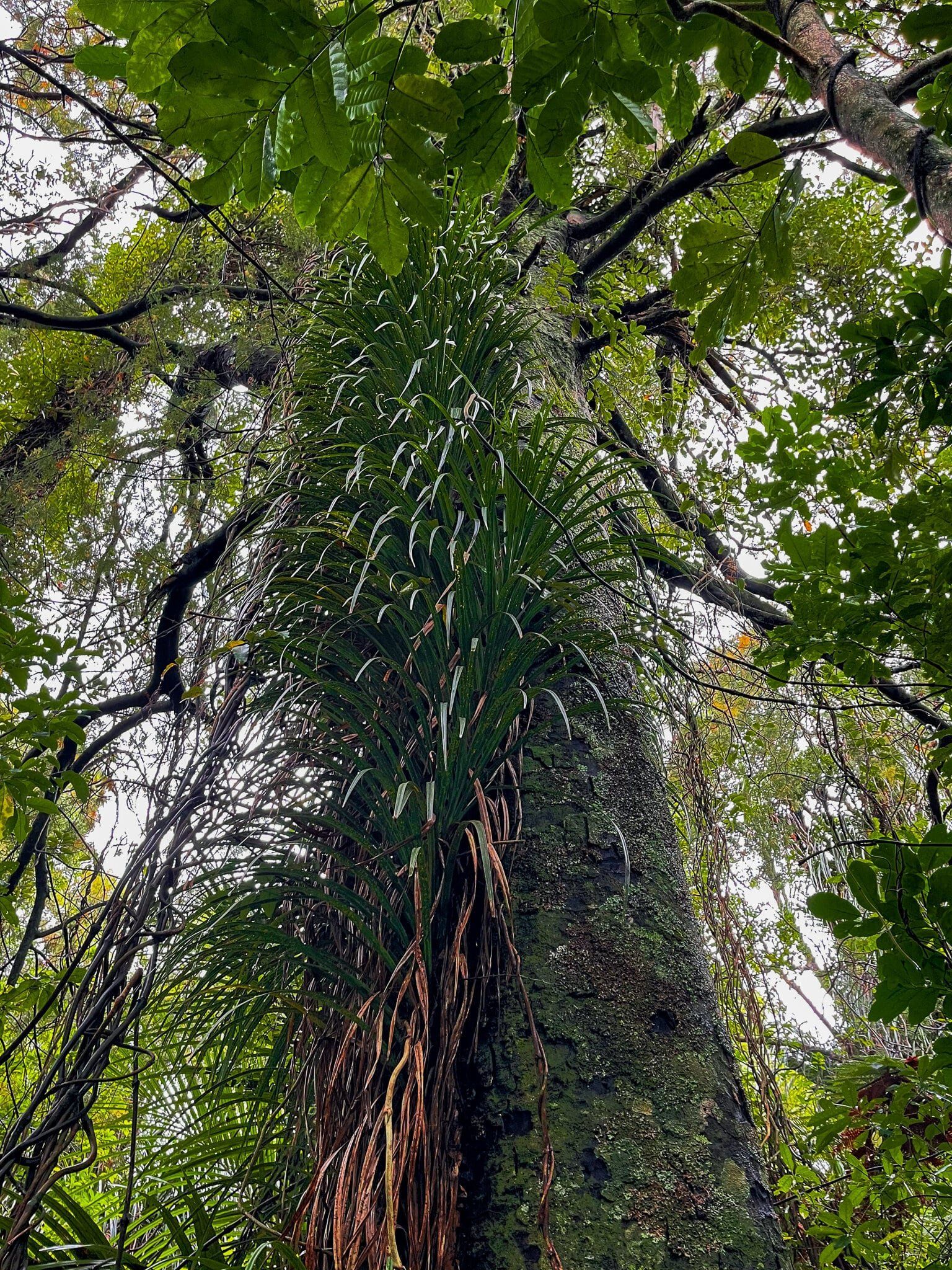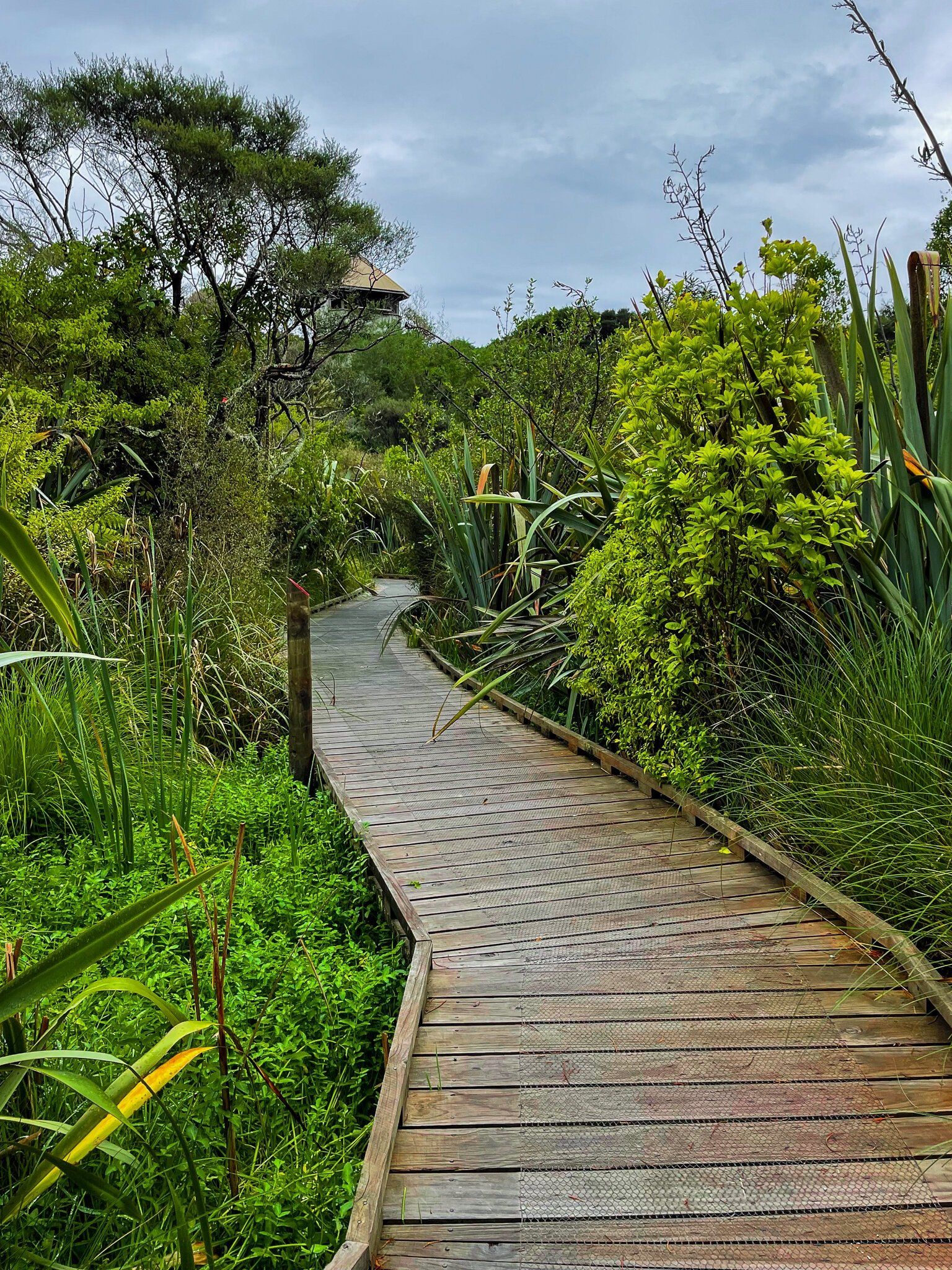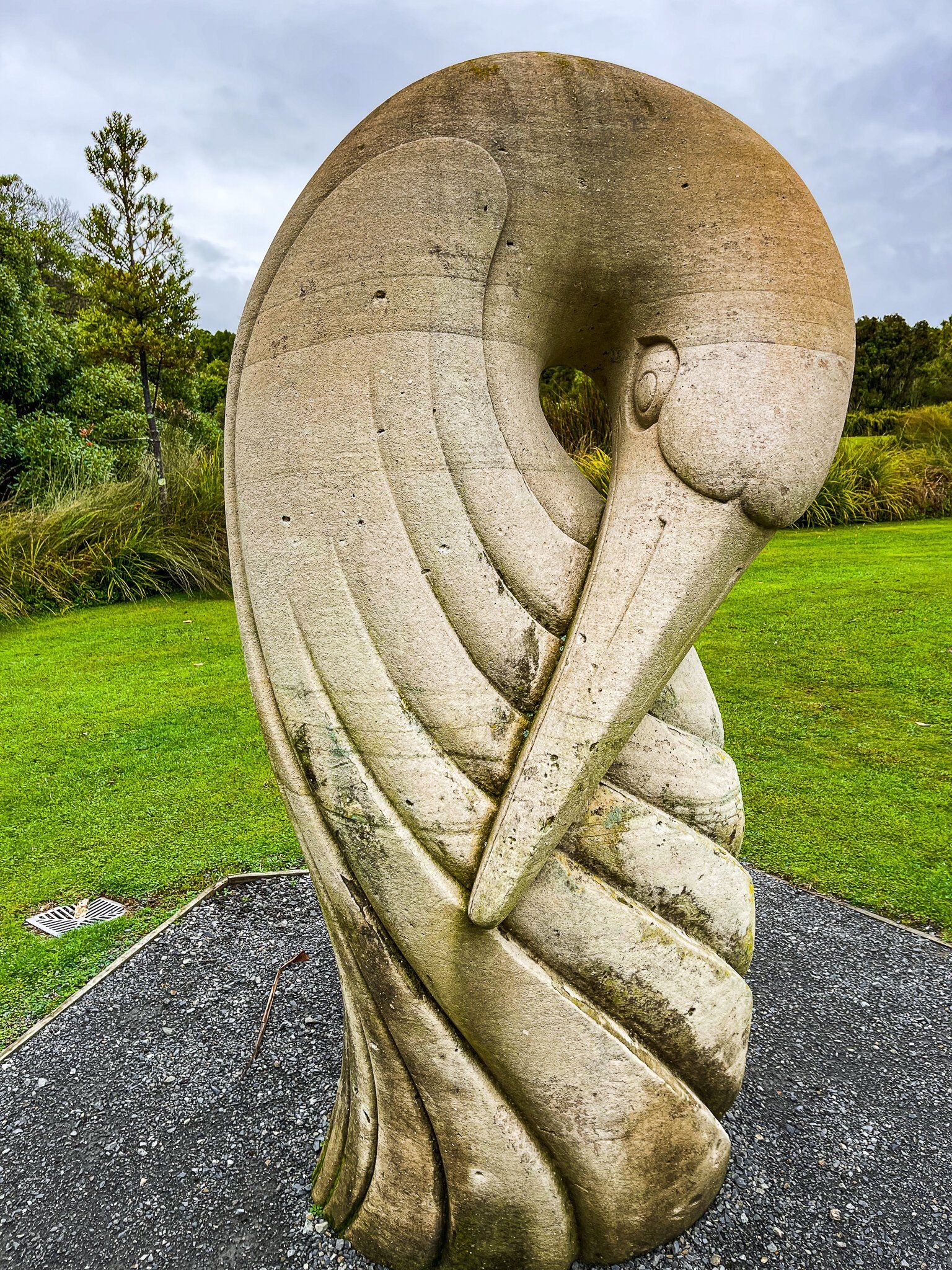The 14-hectare Ngā Manu Reserve can be found on Ngā Manu Reserve Road on the northeast side of Waikanae. It has been operated as a charitable trust since the 1970s to preserve native flora and fauna and to provide related education services. It is one of the largest remnants of coastal lowland swamp forest on the Kāpiti Coast.
When you first arrive, the reserve feels like a retrograde throwback, best for an outing with the kids. Ducks and some swans in front of the main lagoon populate a large grassed area. There are also some walk-in cages for rare native birds, tuatara, and native skinks. It is only when you start to walk around the connected bush and “island” trails that you appreciate how special the place is.
Follow the easy path beyond the grassed areas and into the incredibly pretty wetlands and forest walk, with trees covered in kiekie and other climbers. Some parts benefit from substantial replanting of an eclectic range of natives, in addition to the mature trees on the main forest loop. Keep an eye out for the tower, which also provides views back over the reserve. Kids will also enjoy the small metal “huts” scattered around the walk.
But what makes Ngā Manu particularly interesting are the special conservation projects dotted around the walk. Our favourite was the native mistletoe project, where several marked examples of mistletoe grow on various shrubs. In NZ forests, possums have largely decimated mistletoe, so it can be hard to find.
In another forest corner is a project to foster te puia o te reinga, also known as wae wae atua. Respectively translated as “flowers of the underworld” and “legs of the god”, the parasitic plant is mostly underground but sprouts flowers above ground in early autumn. The nectar is a favourite food of the tiny NZ native, the short-tailed bat. Introduced mammals, in this case pigs, have decimated the plant in the wild.
Walk onto the small islands to see other examples of rare native plants and a great collection of ferns, all in one place.
